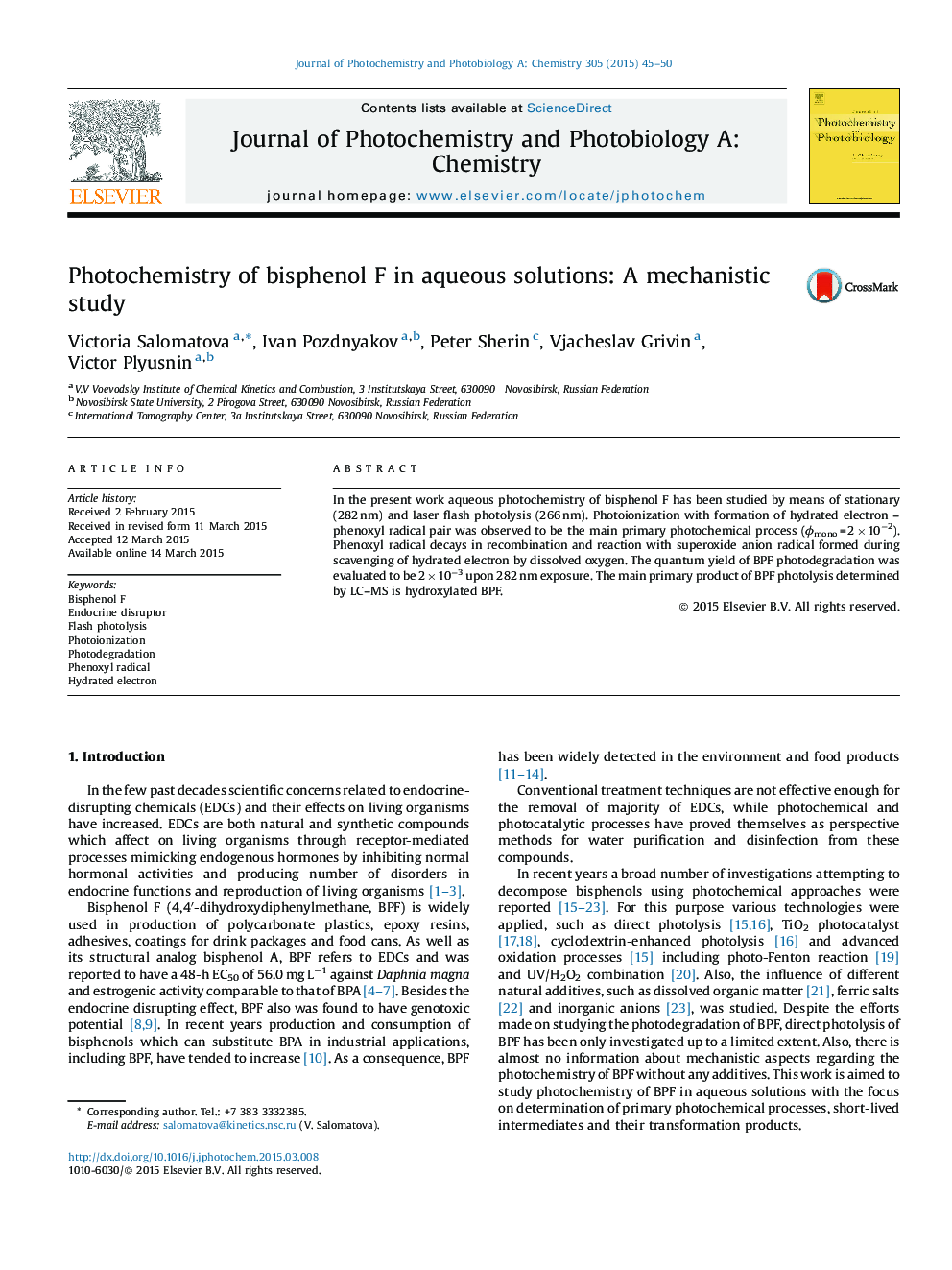| Article ID | Journal | Published Year | Pages | File Type |
|---|---|---|---|---|
| 26706 | Journal of Photochemistry and Photobiology A: Chemistry | 2015 | 6 Pages |
•Mechanistic aspects of photochemistry of bisphenol F has been studied by means of stationary (and laser flash photolysis.•Photoionization with formation of hydrated electron – phenoxyl radical pair was observed to be the main primary photochemical process.•Phenoxyl radical decays in recombination and reaction with superoxide anion radical formed during scavenging of hydrated electron by dissolved oxygen.•The main primary product of BPF photolysis determined by LC–MS is hydroxylated BPF.
In the present work aqueous photochemistry of bisphenol F has been studied by means of stationary (282 nm) and laser flash photolysis (266 nm). Photoionization with formation of hydrated electron – phenoxyl radical pair was observed to be the main primary photochemical process (ϕmono = 2 × 10−2). Phenoxyl radical decays in recombination and reaction with superoxide anion radical formed during scavenging of hydrated electron by dissolved oxygen. The quantum yield of BPF photodegradation was evaluated to be 2 × 10−3 upon 282 nm exposure. The main primary product of BPF photolysis determined by LC–MS is hydroxylated BPF.
